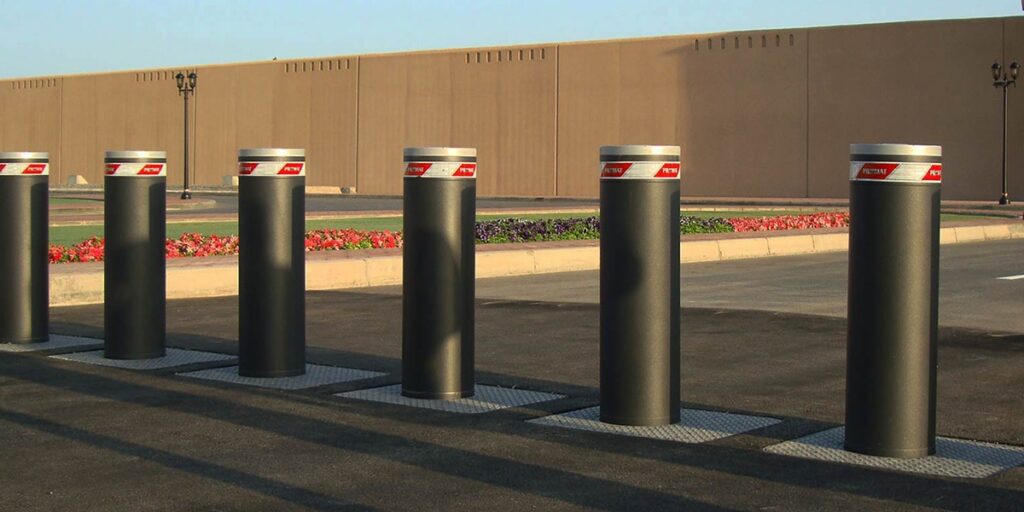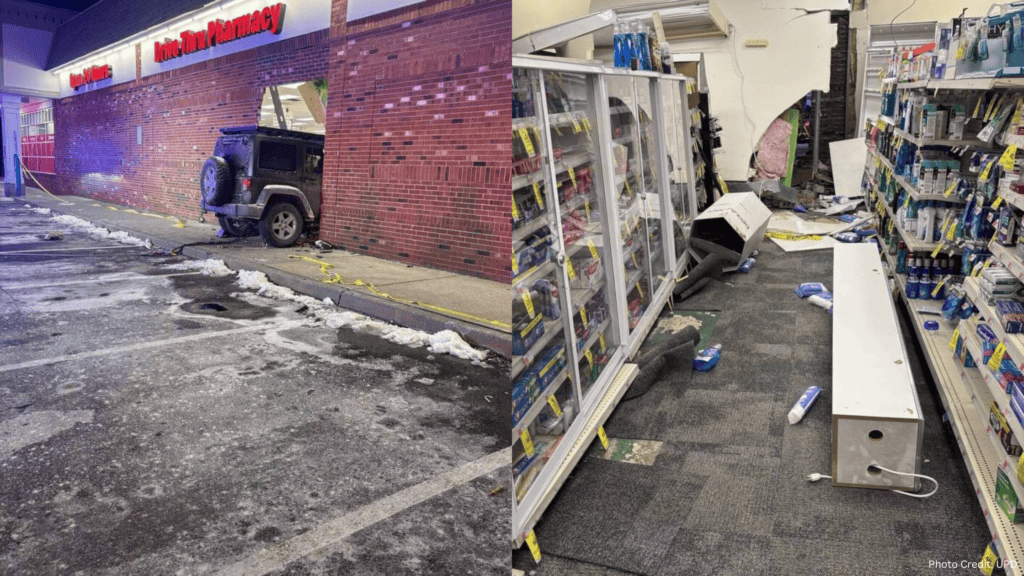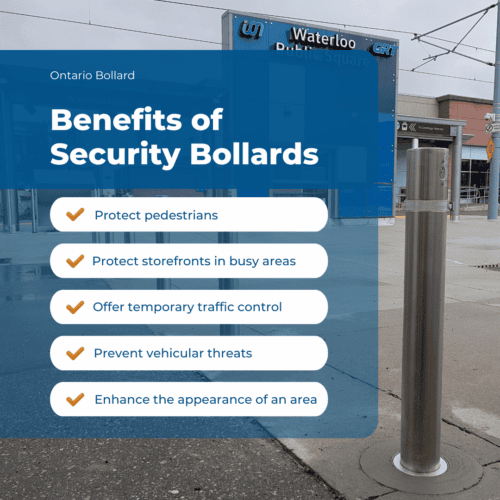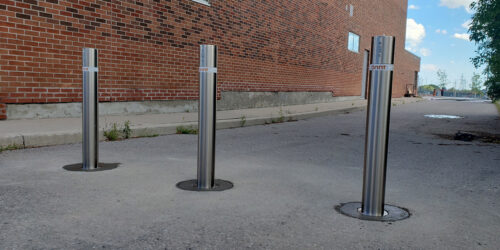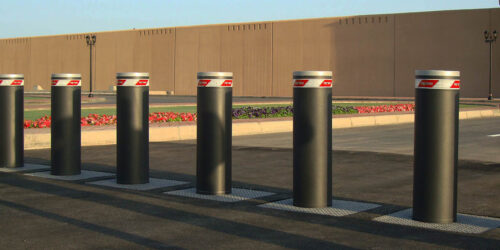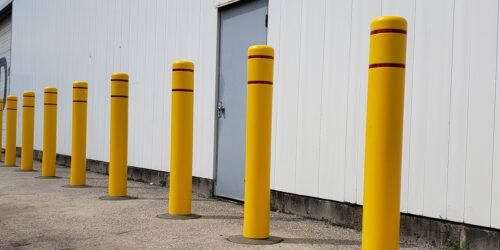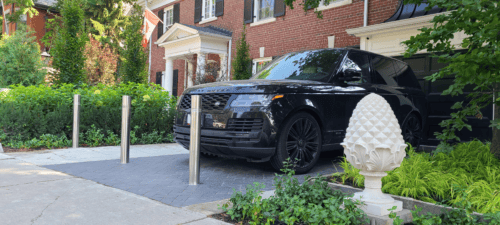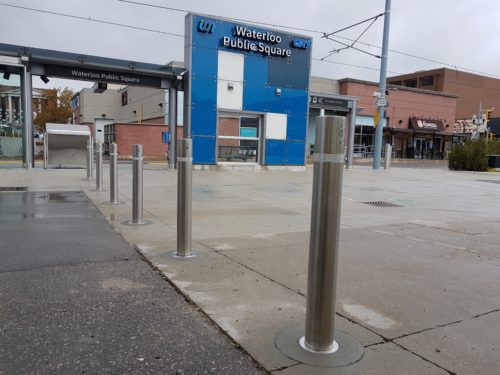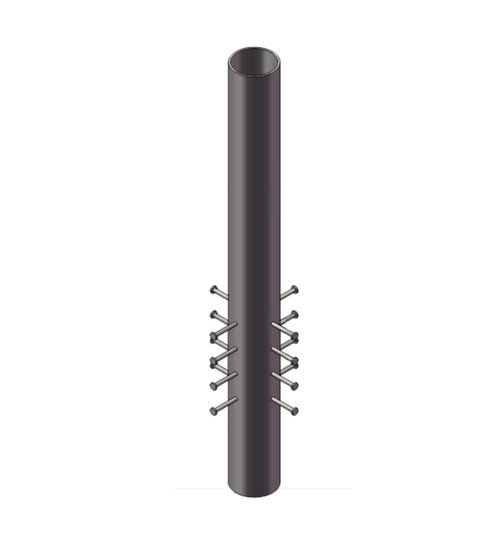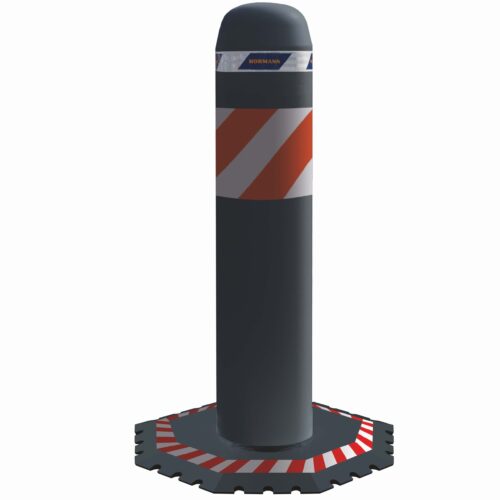Essential Maintenance Guide for Retractable Bollards
Comments Off on Essential Maintenance Guide for Retractable BollardsEssential Maintenance Guide for Retractable Bollards
Retractable bollards are a critical component of modern security systems, offering both functionality and aesthetic appeal for commercial and residential properties. Regular retractable bollard maintenance is essential for ensuring that these systems remain reliable, safe, and visually appealing. In this comprehensive guide, we’ll explore best practices for crash-rated bollard upkeep, including routine cleaning, lubrication, winter care, rust prevention, troubleshooting, and when to call in professional support.
Ensuring the longevity and performance of retractable bollards starts with regular maintenance. These security barriers, designed to withstand high-impact collisions, can encounter issues such as jamming, rust, or electrical malfunctions if not properly cared for. Whether you’re managing facility security, overseeing urban planning projects, or maintaining perimeter security for a business, understanding how to maintain retractable security bollards is vital.
Neglect can lead to complications like:
- Mechanical failures due to accumulated dirt and debris.
- Rust that compromises structural integrity.
- Electrical issues in automatic bollard systems.
This post provides actionable insights tailored for facility managers, security professionals, construction teams, and municipal agencies on retractable bollard cleaning, lubricating retractable bollards, and more.
Routine Cleaning & Inspection
Regular cleaning and inspection are the first steps in effective traffic control bollard maintenance. Preventing dirt buildup and corrosion can significantly extend the life of your bollards.
Why It’s Essential:
- Prevents Dirt Buildup: Accumulated debris can interfere with the mechanical operations of retractable bollards.
- Avoids Mechanical Failures: Regular inspections help identify issues like wear, cracks, or misalignments before they become critical.
- Minimizes Corrosion: Keeping the bollards clean helps prevent rust, especially on steel components.
Best Practices:
- Use Non-Abrasive Cleaners: Select cleaners that won’t scratch stainless steel surfaces.
- Perform Visual Inspections: Look for signs of wear, physical damage, or misalignment.
- Remove Debris: Ensure that the area around the bollard’s mechanism is free of obstructions.
Recommended Frequency:
- Monthly Visual Inspections: Check for any obvious signs of deterioration.
- Deep Cleaning: Every 3-6 months, perform a more thorough cleaning and lubrication check to maintain smooth operation.
Implementing these routines ensures your bollards function optimally and remain reliable over time.
Lubrication & Moving Parts Maintenance
One of the most common issues with retractable bollards is stiffness or jamming due to inadequate lubrication. Proper lubricating retractable bollards is crucial for maintaining smooth movement and preventing mechanical wear.
Common Issues:
- Stiff or Stuck Bollards: Often caused by dried-up lubricants or inadequate application.
- Increased Wear and Tear: Friction between moving parts can lead to premature deterioration.
How to Lubricate:
- Identify Key Friction Points: Focus on hinges, hydraulic pistons, and any internal mechanisms.
- Use Manufacturer-Approved Lubricants: This ensures compatibility and optimal performance.
- Avoid Over-Lubrication: Excess lubricant can attract dirt and debris, negating its benefits.
Recommended Schedule:
- Standard Bollards: Lubricate every 6 months.
- High-Traffic Areas: For locations with frequent usage, consider quarterly lubrication.
Regular lubrication not only enhances performance but also minimizes the need for costly repairs down the line.
Winter Maintenance: Preventing Ice & Snow Buildup
Cold weather poses unique challenges for retractable bollards. Winter maintenance for security bollards is essential to prevent ice and snow from interfering with their operation.
Challenges:
- Ice Formation: Can cause bollards to jam or become stuck.
- Snow Accumulation: May conceal damage or lead to misalignment.
- Low Temperatures: Can affect hydraulic systems and mechanical parts.
Solutions:
- Apply a De-Icing Agent: Use an appropriate de-icing solution around the base of the bollard before winter sets in.
- Prompt Snow Removal: Regularly clear snow to avoid buildup around moving parts.
- Test Regularly: Ensure that automatic retractable bollards are functioning correctly under winter conditions.
- Consider Heated Systems: For extreme climates, heated bollard systems or anti-freeze hydraulic fluid can be beneficial.
Taking proactive measures during winter not only prevents operational issues but also prolongs the lifespan of your bollards.
Preventing & Treating Rust on Bollards
Rust is a common enemy of metal structures, particularly for bollards exposed to the elements. Preventing rust on steel bollards is critical for maintaining both their appearance and structural integrity.
Why It Matters:
- Structural Integrity: Rust can weaken the bollard, reducing its ability to absorb impacts.
- Aesthetic Appeal: Rust can detract from the overall look of your property.
- Operational Reliability: Corrosion can interfere with moving parts and lead to mechanical failures.
How to Prevent Rust:
- Anti-Corrosion Coatings: Apply these coatings to protect metal surfaces from moisture and salt.
- Regular Cleaning and Drying: Especially important in coastal or humid environments.
- Material Selection: Opt for galvanized or stainless steel bollards for better rust resistance.
How to Remove Rust:
- Light Rust: Use a rust remover and a soft brush to gently eliminate surface rust.
- Heavy Rust: May require sanding, repainting, and applying a rust-resistant sealant to restore the bollard’s integrity.
Regular inspection and treatment can prevent rust from becoming a significant issue, ensuring your bollards remain both functional and visually appealing.
Troubleshooting Common Issues with Retractable Bollards
Even with regular maintenance, problems can occur. Here’s how to identify and address common issues:
Bollards Not Retracting Properly:
- Potential Causes: Dirt buildup, mechanical failure, or hydraulic leaks.
- Solution: Clean the area, inspect for damage, and consult troubleshooting guides for hydraulic systems.
Slow Operation in Automated Bollards:
- Potential Causes: Electrical or hydraulic system malfunctions.
- Solution: If lubrication and cleaning don’t resolve the issue, consider electric bollard repair or contact a professional for an assessment.
Unusual Noises During Operation:
- Potential Causes: Insufficient lubrication or worn mechanical components.
- Solution: Lubricate moving parts as needed and inspect for any signs of wear that might require repair.
For those experiencing persistent problems, hydraulic bollard troubleshooting can help pinpoint issues, but if problems persist, it may be time to seek professional assistance.
Professional Bollard Maintenance & Repairs
While routine maintenance can address many issues, some problems require professional attention.
When to Call a Specialist:
- Electrical Malfunctions: Particularly in automatic or electronically controlled bollard systems.
- Significant Impact Damage: Following vehicle impacts or severe mechanical issues.
- System-Wide Failures: Persistent issues that affect multiple bollards may require comprehensive servicing.
Professional Services:
- Annual Service Checkups: Recommended for high-security sites to ensure compliance and reliability.
- Specialized Repairs: Professionals can address complex issues like automatic bollard system care or security barrier servicing, ensuring your system meets all operational and safety standards.
Investing in professional maintenance not only ensures compliance with safety standards but also prolongs the lifespan of your security infrastructure.
Maintaining retractable crash-rated bollards is not just about ensuring functionality—it’s about protecting your property, safeguarding personnel, and preserving the aesthetic integrity of your environment. By implementing a proactive maintenance schedule that includes regular cleaning, lubrication, winter care, rust prevention, and timely professional repairs, you can significantly extend the life and reliability of your bollards.
Key takeaways:
- Routine Cleaning & Inspection: Prevents debris buildup and identifies early signs of wear.
- Lubrication: Ensures smooth operation and reduces mechanical strain.
- Winter Maintenance: Critical for preventing ice, snow, and freezing issues.
- Rust Prevention & Treatment: Maintains structural integrity and appearance.
- Troubleshooting: Helps identify and address common issues promptly.
- Professional Assistance: Necessary for complex repairs and system-wide issues.
Ready to enhance your security measures? Subscribe to our blog for more in-depth maintenance tips or contact us today to learn about professional bollard servicing solutions tailored to your needs.
Regular maintenance is an investment in safety and reliability—start implementing these practices today to ensure your retractable bollards perform flawlessly, season after season.

